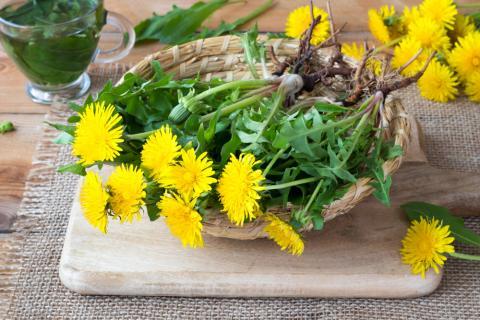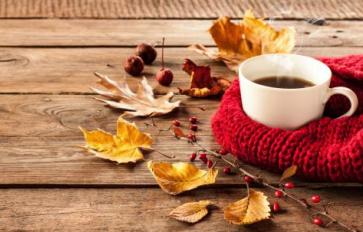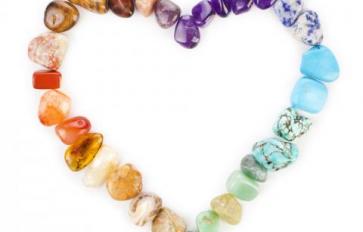
Hot flashes may be a sign of entry into perimenopause, though not every woman will experience them. In fact, here in the West a majority of women will experience them, while in Japan, significantly fewer will.
Hot flashes are technically known as “vasomotor symptoms.” It’s not known specifically what causes them other than the fact that it seems to involve interactions among our hormonal system, brain and blood vessels. For some women, hot flashes are mild and infrequent. For others, they can be quite intense and easily triggered.
In the context of other habits (see “Non-Botanical Tips,” below), plants may provide some relief. Here are a few categories of herbs I turn to for myself and my clients…To help you choose, do a little more homework on the herbs that interest you. You might start one at a time and give it a chance to help. If combining herbs, a good way to go is to choose one from each of the categories below. Herbs may take effect within a week or two, or take up to a couple/few months to fully kick in, so be patient.
Liver-Supporting Herbs
These help the liver process hormones, and most other substances. Sometimes using an herb from this category is enough by itself to help decrease the number and intensity of hot flashes, though many women do need additional support.
- Dandelion Root (Taraxacum officinale): I like this best as a tea or liquid extract. The tea is delicious when chilled after brewing, especially with a bit of full fat coconut milk (or add frozen bananas and throw it all in a blender for a healthy milkshake!).
- Burdock Root (Arctium lappa): Another good one as either tea or liquid extract. Burdock and dandelion are a great combination.
- Vervain (Verbena officinalis or V. hastata): This is, perhaps, a lesser known herb to the general public in terms of menopausal support. Consider a liquid extract. It’s way too bitter to down as a tea, unless you like to torture yourself. Vervain may also help on the stress side of things, and may be particularly useful for women dealing with anger issues.
- St. John’s Wort (Hypericum perforatum): Not so useful as a dry herb…stick with a fresh plant liquid extract. I’m not a fan of the standardized extracts. St. John’s Wort may also help with hot flashes by increasing serotonin levels.
Phytoestrogen-Containing Herbs
Contrary to the term “phytoestrogen,” the phytochemicals these plants possess are not actually estrogen. Rather, they are chemicals that interact with our own hormonal system in a variety of ways.
- Fenugreek (Trigonella foenum-graecum): Fenugreek seeds lacking their seed husks significantly reduced menopausal symptoms without increasing estrogen, and fenugreek has been a very helpful herb in my clinical practice, especially for night sweats. Interestingly, a different study found that the seed husks themselves can also decrease hot flashes, but in this case, estrogen levels did go up.
- Fennel (Foeniculum vulgaris): This has become another of my favorite botanicals for dealing with hot flashes. Plus, it tastes good and is great as a tea in combination with Fenugreek.
- Red Clover (Trifolium pratense): This is a well-known herb that is used for hot flashes, and may be useful even in instances of severe hot flashes. This is another great tea herb.
- Sage (Salvia officinalis): For some lucky women, sage alone may do the trick. It’s used as a cold infusion or liquid extract.
Additional Herbs For Supporting The Endocrine (Hormonal) System
These work via the brain to help attenuate the swings we experience during perimenopause. Some also support adrenal gland health. Adrenal gland function plays a role in the menopausal transition, and chronic stress has been associated with a more difficult transition.
- Vitex (Vitex agnus-castus): Vitex can be used as a tea, but I don’t think it tastes particularly good and choose a liquid extract instead. Perimenopausal complaints are a relatively recent indication for vitex, and herbalists as well as research scientists are finding it to be quite effective for hot flashes, but, be warned, it’s not a fast acting herb. The precise mechanism of action is not known, but vitex is known to influence dopamine signaling in the pituitary gland, which, in turn, may be involved in hot flashes.
- Maca (Lepidium meyenii): Though a warming herb, energetically speaking, maca has traditionally been used for reducing hot flashes (though consider combining it with an energetically cooling herb like dandelion or burdock). Regular use was found to have a variety of effects on the hormones of perimenopausal women, and is also used for supporting adrenal gland health. Maca is eaten as a food in Peru, and is available commercially in various forms, with the powder being popular.
- Black Cohosh (Actea racemosa, aka. Cimicifuga racemosa): The exact mechanism by which it helps hot flashes isn’t clear, but it may be at least in part through effects on serotonin. In contrast to common belief, black cohosh does not increase estrogen levels or activate estrogen receptors in the body. For many women, it’s helpful for mood support and may influence the adrenal glands. Use only organically grown forms from a well-respected source…the plant is endangered in some states and under severe pressure in others and the wild harvested should absolutely not be used.
Non-Botanical Tips
- Wear layered clothing. This allows you to strip down a layer or two when you’re on fire!
- Wear natural clothing. Natural materials breathe better than synthetic materials.
- Avoid ingesting items that trigger a hot flash. Common ones include hot spices, caffeine, alcohol (especially red wine), and any foods that tend to heat you up.
- Have some good stress management techniques. Stress is a contributing factor to hot flashes. Walk. Draw. Do yoga. Buy plates from a thrift store and smash them. Whatever helps.
Stay cool and be well!








